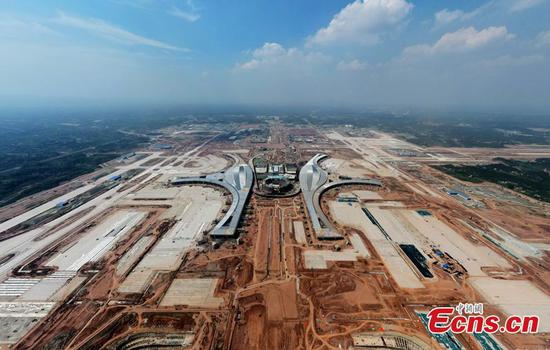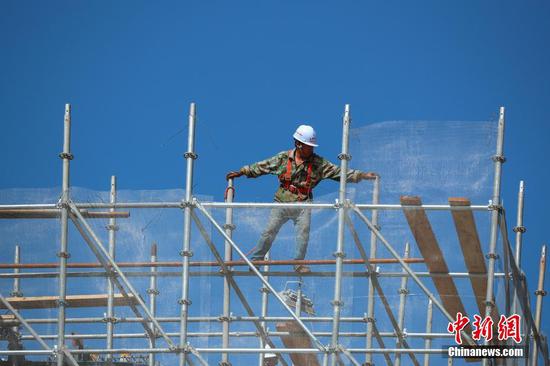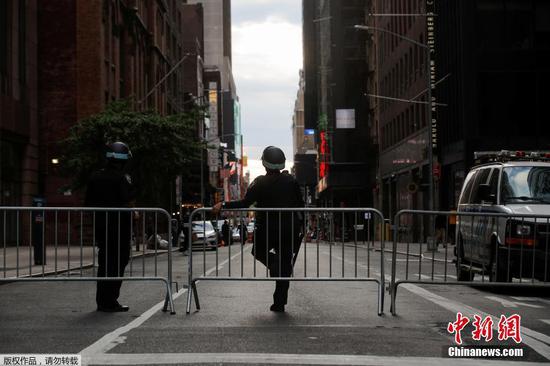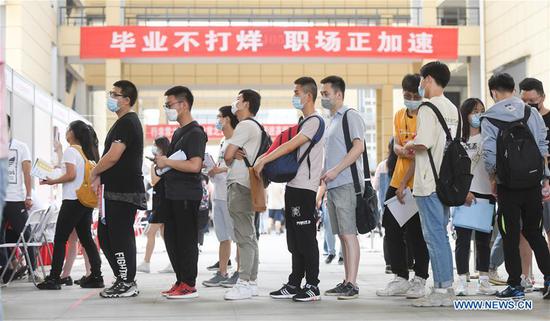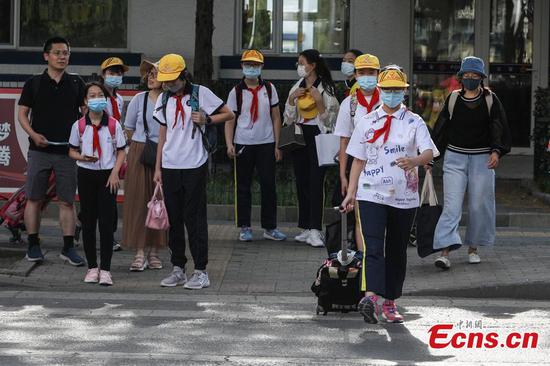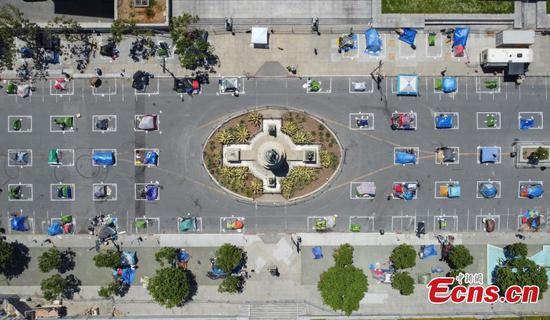New data showed U.S. unemployment rate dropped slightly in May as businesses gradually reopen across the country, an encouraging sign for the COVID-19-battered labor market. Despite that, analysts said job losses remain significant and the road to recovery could be bumpy.
U.S. employers added 2.5 million jobs in May, and the unemployment rate fell slightly to 13.3 percent, the U.S. Bureau of Labor Statistics (BLS) reported Friday.
"The rise is a big surprise given that consensus estimates had called for a loss of 7.5 million jobs and a further increase in the unemployment rate," Mark Vitner, a senior economist at Wells Fargo Securities, wrote in an analysis. The Wells Fargo Securities Economics Group had projected unemployment rate to jump further in May to 20 percent.
Vitner, however, noted that the weekly initial unemployment claims have been trending lower but remain "astonishingly" high. The Labor Department reported Thursday that the number of initial jobless claims in the United States totaled 1.88 million last week.
"The trend in continuing unemployment claims looks to be a more accurate guide to employment trends and suggests that employers have called back some workers as businesses re-opened," Vitner said.
Diane Swonk, chief economist at Grant Thornton, a major accounting firm, wrote in a blog that job gains are "welcome" and suggest that the economy may have "hit a trough" in May, while noting that "losses remain significant."
At a White House press conference, U.S. President Donald Trump touted the new job numbers, saying that the job surge is "widespread" and the nation will go back to have the "greatest economy" in the next few months.
Some economists, meanwhile, argued that the unemployment rate is "higher than it looks," and is still high if all furloughed workers returned, according to an analysis released by the Peterson Institute for International Economics (PIIE) Friday.
"Even this very large official increase understates the increase in the unemployment rate from a historically-comparable perspective because it counts an extra 4.9 million people who were 'not at work for other reasons' as employed and also because 6.3 million people have left the labor force since February," wrote PIIE senior fellow and Harvard professor Jason Furman, and Harvard Kennedy School research associate Wilson Powell.
"Adjusting for these factors our 'realistic unemployment rate' was 17.1 percent in May, down from the April value but still higher than any other unemployment rate in over 70 years," they said.
Echoing their view, Joseph Brusuelas, chief economist at accounting and consulting firm RSM US LLP, wrote in a note that the "underemployment rate" -- those out of work, discouraged, marginally attached or working part time for economic reasons -- stands at 21.2 percent.
Earlier data showed that the unemployment rate previously soared to a record 14.7 percent in April, as COVID-19 continues to ravage the economy. The 10.3-percentage-point jump from March is the largest over-the-month increase since records started being kept in January 1948.
The latest jobs report showed that the unemployment rate declined by 1.4 percentage points to 13.3 percent in May, and the number of unemployed persons fell by 2.1 million to 21 million.
"These improvements in the labor market reflected a limited resumption of economic activity that had been curtailed in March and April due to the COVID-19 pandemic and efforts to contain it," the BLS said in the report.
"In May, employment rose sharply in leisure and hospitality, construction, education and health services, and retail trade. By contrast, employment in government continued to decline sharply," the bureau noted.
The BLS report also showed that the labor force participation rate increased by 0.6 percentage point in May to 60.8 percent, following a decrease of 2.5 percentage points in April.
Despite the improvements, the bureau said the unemployment rate and the number of unemployed persons are up by 9.8 percentage points and 15.2 million, respectively, since February.
Since late April, many U.S. states have started to reopen their economies, allowing certain nonessential businesses to operate under social distancing guidelines. As of late May, all U.S. states had been in some phase of reopening.
Manufacturing and services industries are also seeing signs of improvement, though at low levels. The Purchasing Managers' Index (PMI) stood at 43.1 percent in May, up 1.6 percentage points from the April reading, indicating a manufacturing contraction for the third straight month, the Institute for Supply Management (ISM) reported earlier this week.
The U.S. services sector contracted for the second straight month in May despite the gradual reopening, the ISM reported Wednesday. The non-manufacturing index registered 45.4 percent, 3.6 percentage points higher than the April reading.
Noting that the new job data showed "surprising strength in nonfarm employment," Vitner said "while the economy is now on the road to recovery, that road is likely to have many twists and turns along the way."
"Calling May the end of the recession really does a disservice to the more than 19 million still unemployed and the extraordinary challenges we face as the economy struggles to reopen with the rate of infection still high," Swonk said.
Brusuelas said the unemployed people will require sustained policy attention. "Both the fiscal and monetary authorities will need to follow through on their current respective policy paths to ensure that whatever job gains from the May report that prove durable are not due to complacency by policymakers," he said.
Meanwhile, nationwide protests triggered by the death of George Floyd, an unarmed black man, have caused chaos in some cities as violence erupted between police and protesters, adding uncertainty to U.S. states' reopening efforts.
According to a recent projection by the Atlanta Federal Reserve, the second-quarter gross domestic product (GDP) will plunge by 52.8 percent at an annualized rate. It anticipated personal consumption expenditures, which make up about two thirds of the nation's GDP, to fall 58.1 percent in the quarter.












